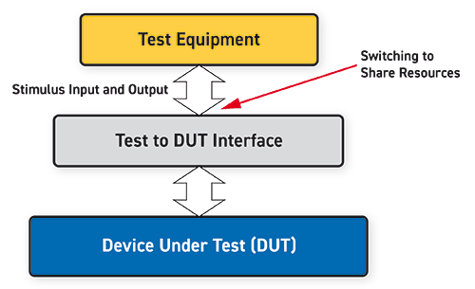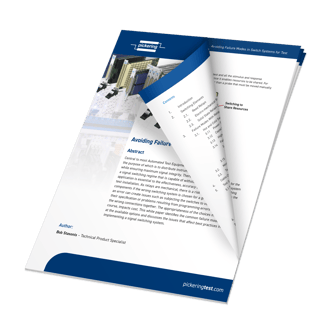Central to most Automated Test Equipment (ATE) is the signal switching system, the purpose of which is to distribute instrumentation I/O to the unit to be tested while ensuring maximum signal integrity. Therefore, selecting and implementing a signal switching regime that can withstand the demands of the application is essential to the effectiveness, accuracy, and repeatability of the test installation. As relays are mechanical, there is a risk of overstressing these components if the wrong switching system is chosen for a given application. Such
an error can create issues such as subjecting the switches to voltages outside their specification, or problems resulting from programming errors that short the wrong connections together. The appropriateness of the choices made, of course, impacts cost.
Signal switching is responsible for the connection between the unit-under-test and all the stimulus and response instrumentation. It is essential in almost every test application since it enables resources to be shared. For example, a DMM can be set up to be switched from one point to another rather than a probe that must be moved manually around the system, which can be slow and prone to error.
 This simplified block diagram emphasizes how signal switching is a critical element of the test system, gating access of test equipment resources to the Device Under Test
This simplified block diagram emphasizes how signal switching is a critical element of the test system, gating access of test equipment resources to the Device Under Test
However, since any system is only as strong as its weakest link, if the switching selected is poor or inappropriate for the application, then the reliability of the system and indeed the quality of the measurement data produced by the test system will be correspondingly poor. Therefore it is vital to make correct, informed decisions to determine the proper switching and cabling for your system. Diagnostics will then enable the accuracy of the test results to be ascertained, as well as the efficiency—in terms of up-time—of a test set-up.
When designing a switch system, you'll want to identify the common failure modes, looks at the available options, and take into consideration the issues that affect best practices in implementing a signal switching system.
To learn more on this subject, check out our white paper, "Avoiding Failure Modes in Switch Systems for Test."
